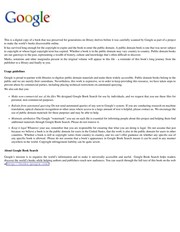Check nearby libraries
Buy this book

Ramola always occupied a special place in George Eliot's own affections, Looking back at the end of her career she remarked 'I felt some wonder that anyone should think I had written anything better'. The copy text for the Clarendon edition is the serialization in the Cornhill Magazine (July 1862-August 1863), emended to incorporate authorial revisions in the first edition in book form (1863), the Illustrated edition (1865), and the setting copy and proofs of the Cabinet edition (1877-8). A number of manuscript readings are also restored, where it seems likely that the Cornhill compositor misread the handwriting. Changes and deletions in the manuscript are recorded in the apparatus, along with rejected variants from post-Cornhill printings.
Drawings on George Eliot's unpublished journals and notebooks, the introduction gives a comprehensive account of the genesis, composition, and publishing history of the novel: her two visits to Florence; her prodigious preparatory research before she began writing; her negotiations with the publisher George Smith, who offered her the astonishing sum of 10,000 pounds for the book; her correspondence with Frederic Leighton, who illustrated the novel for the Cornhill; and the persistent ill-health and depression that afflicted her throughout the period of composition. Since its first appearance, Romola has perplexed many of George Eliot's admirers by the range and density of its historical references. Here, in a series of unusually extensive notes, the sources of these allusion are traced and their significance explained. The result is to re-establish the novel as one of the very greatest of her artistic accomplishments - in Henry James's words, 'on the whole the finest thing she wrote'.
Check nearby libraries
Buy this book

Previews available in: English
Showing 10 featured editions. View all 81 editions?
| Edition | Availability |
|---|---|
|
01
Romola (Konemann Classics)
June 2000, Konemann
Hardcover
in English
- Slipcase edition
382905386X 9783829053860
|
cccc
Libraries near you:
WorldCat
|
|
02
Romola (The Worlds Classics)
August 1994, Oxford University Press
in English
0192829645 9780192829641
|
cccc
Libraries near you:
WorldCat
|
| 03 |
aaaa
Libraries near you:
WorldCat
|
| 04 |
bbbb
Libraries near you:
WorldCat
|
| 05 |
bbbb
Libraries near you:
WorldCat
|
| 06 |
bbbb
|
| 07 |
bbbb
|
| 08 |
bbbb
|
| 09 |
bbbb
Libraries near you:
WorldCat
|
| 10 |
bbbb
Libraries near you:
WorldCat
|
Book Details
Edition Notes
Includes bibliographical references.
Classifications
The Physical Object
ID Numbers
Source records
Scriblio MARC recordInternet Archive item record
Internet Archive item record
Internet Archive item record
Internet Archive item record
Library of Congress MARC record
OpenLibraries-Trent-MARCs record
Internet Archive item record
Better World Books record
Library of Congress MARC record
amazon.com record
marc_columbia MARC record
Work Description
Eliot’s only historical novel, set in 15th century Florence under the rule of the Medicis, blends fact with fiction as the reader follows the almost saint-like Romola and the amoral and feckless Tito Melema whom she marries against the advice of her brother, an equally saintly priest. An impressive account of Renaissance life in a wealthy Italian state.
Excerpts
Community Reviews (0)
Feedback?| October 4, 2021 | Edited by ImportBot | import existing book |
| July 31, 2020 | Edited by ImportBot | import existing book |
| February 13, 2020 | Edited by MARC Bot | remove fake subjects |
| November 7, 2019 | Edited by Brittany Bunk | Added new cover |
| October 8, 2009 | Created by WorkBot | create work page |






















